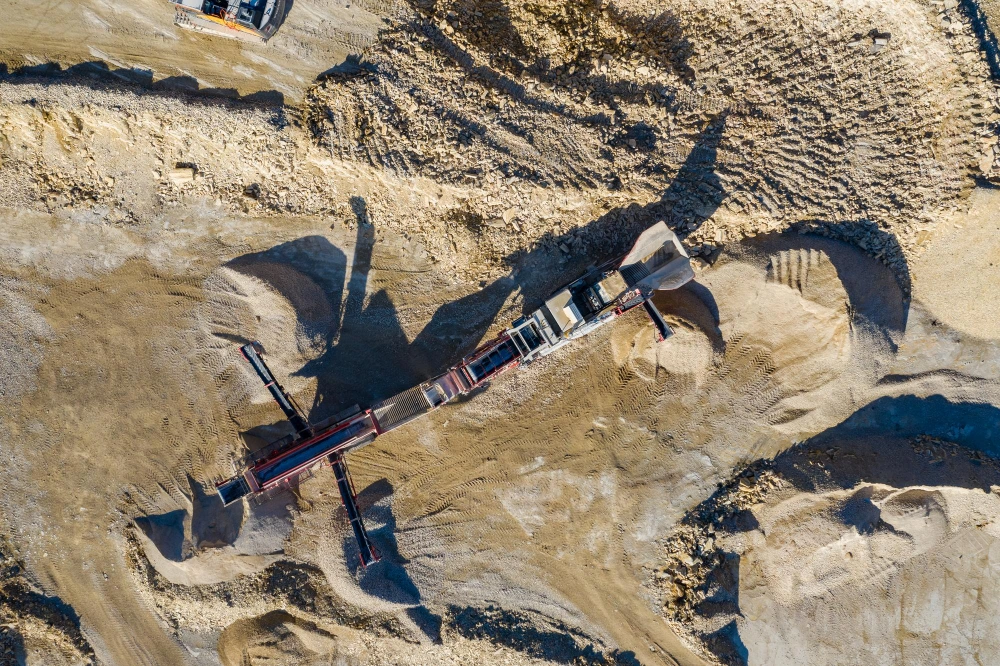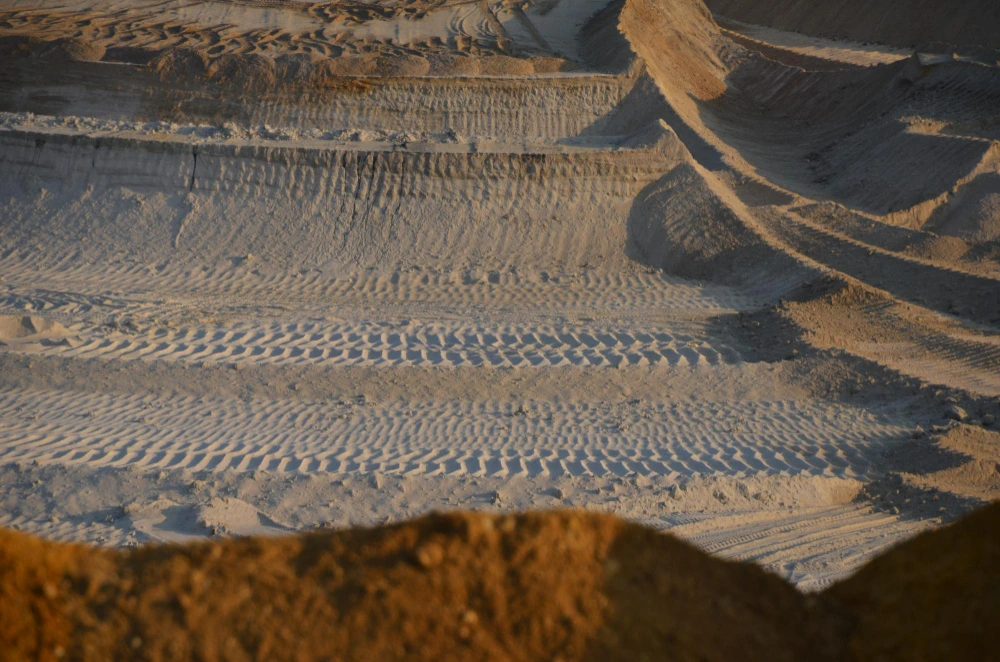Contents
Strip mining is a form of surface mining in the same vein as open-pit and placer mining. It’s employed to remove minerals hiding beneath strips of rocks and vegetation. This article provides an overview of how it works, its environmental impacts and benefits, while also providing a historical backdrop and a prediction on the use of strip mining.
What is strip mining?
Strip mining is a surface mining method that involves removing long strips of soil and rock (called overburden) to expose and extract near-surface mineral deposits. It is primarily used for orebodies that lie close to the Earth’s surface but are spread over a large area. Opposed to underground mining, strip mining removes horizontal layers of material, making it efficient for shallow deposits.
Strip mining is one of many mining methods
There are two primary methods of extracting ore through mining: Surface mining and underground mining. Strip mining belongs in the former category. Surface mining is employed when the ore is close to the surface. Common techniques include:
- Open-pit mining: A large hole is dug in the ground to extract ore layer by layer.
- Placer mining: Involves sifting through river sediments for minerals.
- Strip mining: Overburden is removed in strips to access the ore below.
What is strip mining used for?
Strip mining is especially useful in coal extraction because coal often is formed in extensive layers, which are easier to remove through such a method rather than underground tunnels, for example.
How does strip mining work?
Strip mining involves excavating a long strip of overburden to identify and then extract the minerals one’s looking for, such as coal. The first step is to clear vegetation and scrape away the topsoil. Once this is cleared, holes are drilled into the overburden. Afterwards, the broken overburden is removed and minerals are extracted. From there, overburden from the next strip is used to fill the previous one. This process is repeated in parallel strips until the mining operation is completed.
Area and contour mining
There are two main techniques for performing strip mining:
- Area mining: Appropriate for when mining near-surface, where there are thin ores located over a wide and flat terrain.
- Contour mining: Used when the extracting zone is narrower and the overburden is removed to expose ores on hilly and mountainous terrain.

When is strip mining used?
Strip-mining is chosen when a deposit meets specific geological and economic conditions:
Depth and geometry of the deposit
- Ideal for shallow, horizontal, or gently dipping seams.
- The depth of overburden should be relatively thin compared to the value of the mineral resource.
Deposit extent
- Best suited for large, laterally continuous orebodies such as coal beds, phosphate layers, and oil sands.
Economic considerations
- Lower capital investment than underground mining.
- High production rates and simple logistics make it cost-effective for bulk commodities.
Surface accessibility
- Chosen when environmental or land-use restrictions are minimal, and the affected land can later be reclaimed or repurposed.
How does strip mining affect the environment?
Although efficient for its intended purpose, strip mining has significant environmental consequences due to large-scale land disturbance, loss of vegetation, and potential water contamination.
The mining operation requires the removal of vegetation and surface soil, which damages the forests and disrupts the natural habitats of the wildlife in the area. Topsoil can also be washed away and cause blockages when entering nearby streams. This can also compromise the groundwater and contaminate the soil.
Having said this, strip mining remains one of the most widely used methods for bulk mineral extraction worldwide because of its high productivity and relatively low operational cost.

The historical background of strip mining
The early days
The concept of strip mining dates to the early 20th century, when steam shovels and mule-drawn scrapers were first used to remove surface layers of rock, and employed in the mining of coal. Operations were small and localized, often carried out manually or with simple mechanical aids.
Mid-20th century
By the 1940s, the process became industrialized, with the help of diesel-powered machinery. Large draglines and power shovels could move massive quantities of earth efficiently, allowing mines to expand rapidly.
During the mid-20th century, strip-mining became dominant in coal-producing regions such as Appalachia and the American Midwest. While it helped with industrial growth and provided cheap energy, it also caused severe landscape alteration and led to many communities being displaced.
Today
Today, modern strip-mining operations rely on highly mechanized equipment such as bucket-wheel excavators, continuous miners, and conveyor systems. Satellite mapping and drone-based surveying have made mine planning far more precise, while reclamation laws in many countries now require mined areas to be restored after extraction.

Key advantages
High production efficiency
The continuous and large-scale operations of strip mining enable rapid extraction of vast mineral quantities. Additionally, equipment such as draglines and loaders reduce manual labor requirements, making the production process even more efficient.
Low operating costs
There are lower safety risks and infrastructure costs compared to underground mines. One of the reasons for this, is that the easy access to ore reduces transportation and ventilation needs.
Simplified recovery process
There is direct access to mineral layers with minimal geological uncertainty. This means that there is a reduced need for complex ground support or underground mapping.
Potential for land reclamation
Once mining is complete, the area can be backfilled and recontoured for agriculture, forestry, or community use, depending on regulations and planning.
Challenges and limitations
Despite its operational simplicity, strip-mining presents major environmental and social challenges.
Water pollution
Runoff from mine sites can cause acid mine drainage, contaminating rivers and groundwater. Additionally, sediment and heavy metals pose long-term ecological risks.
Air and noise pollution
Dust from blasting and hauling operations affects air quality and nearby communities, and continuous machinery operation generates significant noise and vibration.
Severe land disturbance
The removal of topsoil and vegetation leads to habitat destruction and soil erosion. Even though the area can be restored after the mining operation is complete, reclaimed landscapes often differ significantly from their original ecosystems.
Aesthetic and social impacts
Related to the previous point, large open pits permanently alter regional topography. Communities near strip mines may experience loss of arable land and displacement.
Limited deposit depth
Strip mining is not viable for deep or steeply dipping orebodies. The stripping ratio (overburden to ore thickness) becomes uneconomic beyond certain depths.
The future of strip mining
Strip mining remains a cornerstone of global resource extraction, especially for coal and phosphate, but its future relies on balancing productivity with environmental responsibility.
Modern operations increasingly incorporate progressive reclamation, where mined-out sections are restored while extraction continues elsewhere. Governments and companies are investing in eco-friendly technologies, including improved sediment control, dust suppression, and reforestation strategies.
Digital innovations, such as geospatial modeling, remote sensing, and AI-based environmental monitoring, are transforming how strip mines are managed. These tools help predict ecological impacts, optimize overburden removal, and ensure compliance with sustainability standards.
As global energy systems shift toward renewables, the demand for strip-mined resources may gradually decline. Yet, for essential raw materials like rare earth elements and industrial minerals, strip-mining will continue to play a crucial role, as long as it evolves toward more responsible and technologically advanced practices.
In conclusion, while strip-mining offers economic and logistical advantages for shallow mineral extraction, it must be carefully managed to mitigate its profound environmental footprint. The future of this method will depend on innovation, strict regulation, and a global commitment to sustainable resource development.
Advanced borehole steering technology in mining
Aziwell is a leading provider of directional drilling solutions and offers service, rental, and software products for directional drilling. At the heart of this is our advanced borehole steering technology, which reduces environmental footprint through fewer drill pads, operational time and CO₂ emissions. Our borehole steering is precise, does not require special rods or rigs, and has no depth limitations.



